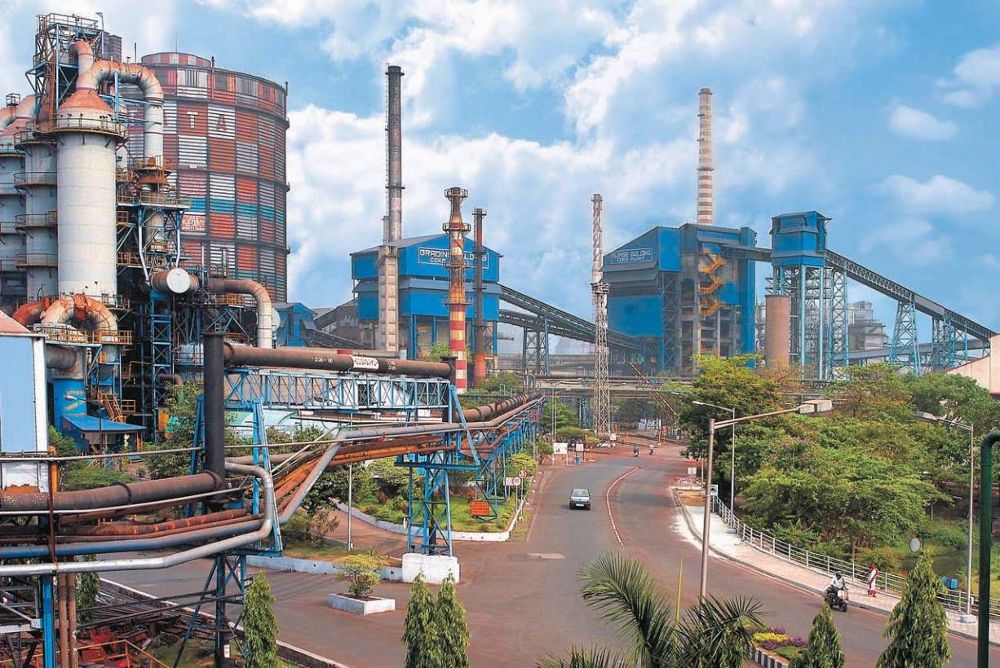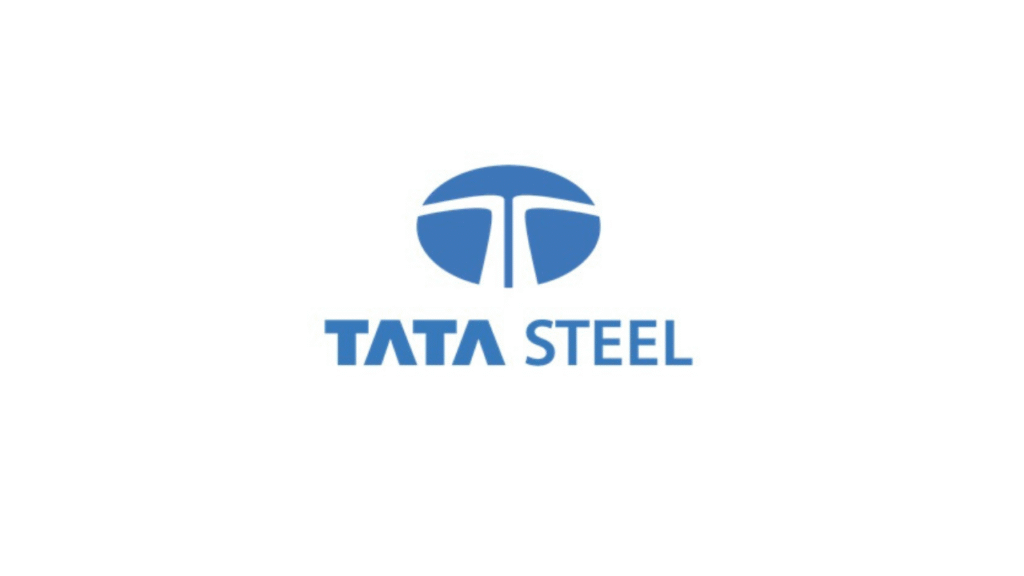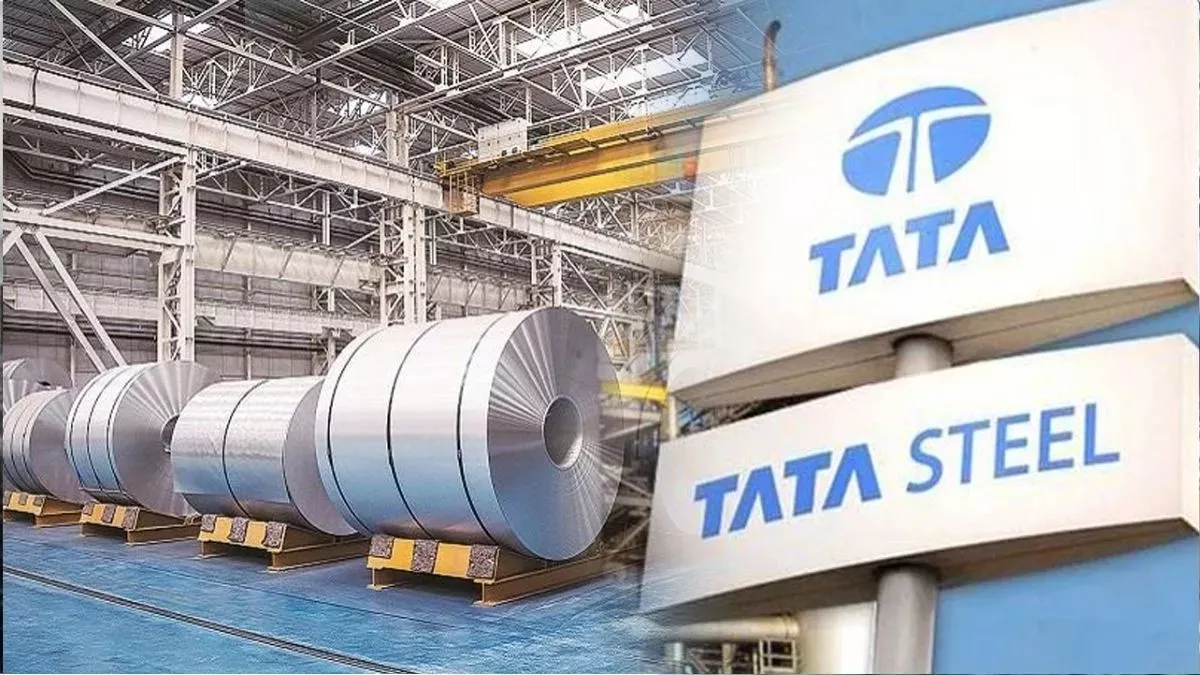TATASTEEL: An overview
Crucially involved in the worldwide steel market is Tata Steel, one of the biggest steel producing firms in India and the globe. Established in 1907, it is a member of the prestigious Tata Group distinguished for its quality dedication and diversity. With main operations in India, Europe, and Southeast Asia, Tata Steel has a great capability for manufacture spanning continents. Leading manufacturer of steel goods, the corporation runs businesses in infrastructure, construction, and automotive as well as others.

TATASTEEL’s Background
Jamsetji Tata, whose desire was to construct a steel plant in India, founded Tata Steel for this aim. Starting with the building of its first factory, which finally turned into a world-class steel-producing facility, the corporation started its activities in Jamshedpur, Jharkhand. Tata Steel grew internationally throughout time, purchasing businesses such as Corus Group in 2007, therefore greatly enhancing its presence in Europe. Driven by innovation, sustainability, and a great concentration on its stakeholders, Tata Steel is still a major player in the sector today.
Management and Authority
Tata Steel’s management has always concentrated on ethical leadership, corporate governance, and environmentally friendly policies. The CEO and Managing Director of the leadership team is very important in guiding the course of expansion of the business. Having decades of steel industry experience, the leadership team has negotiated several economic difficulties, market swings, and geopolitical concerns, therefore guaranteeing the company’s durability and expansion in a competitive market.
TATASTEEL’s financial performance
Profit Patterns and Annual Income
The financial situation of Tata Steel during the last few years has demonstrated a favorable direction. Driven mostly by its varied portfolio and worldwide market presence, the corporation has regularly shown great revenue growth. Tata Steel has reported an annual turnover in excess of INR 1.5 trillion recently, with net profits regularly expanding because to prudent cost control, market development into new areas, and the worldwide increasing demand for steel.
Recent Financial Studies
Tata Steel exceeded market expectations in terms of both income and earnings in the most recent financial reports, showing a good quarterly performance. Its capacity to keep high production standards while controlling costs has been a major component in this accomplishment. From its European and Indian markets as well as from its value-added goods segment—which now forms a major component of its income source—the steel giant has seen rising sales.
Important Financial Measurements to Track
Investors usually follow important financial indicators as Tata Steel’s to assess its situation:
Profit Margins and Income:
Constant revenue shows excellent operational performance.
EBITDA:
Since it ignores non-operational income and expenses, this statistic helps determine operational efficiency.
Debt Values:
Understanding the financial stability of a corporation depends much on its debt to equity ratio.
cash flow:
Positive cash flow guarantees the business can keep running and make investments in chances for expansion.
The TATASTEEL Stock Market Performance
Synopsis of TATASTEEL Stocks
Big stock markets including the National Stock Exchange (NSE) and the Bombay Stock Exchange (BSE) list Tata Steel. Due to its stable performance and development prospects, both retail and institutional investors like this often traded stock. The stock is well-known for its volatility; sector-specific elements including raw material costs and steel demand affect price swings in addition to global economic variables.

Share Price History of TASTEEL
Reflecting both the cyclical character of the steel sector and more general market patterns, Tata Steel’s share price has seen notable swings. Strong development in emerging nations and a need for steel helped the stock recover strongly from a trough in 2008 during the global financial crisis. Following a reorganization of its European activities and notable debt reduction, the stock price jumped once more following 2017.
Factors Affecting TATASTEEL Share Price
The performance of Tata Steel depends on several elements:
Home elements
Growing Indian Steel Industry:
Demand for steel has grown in India as fast infrastructure development—especially in roads, homes, and industrial projects—has progressed.
Government Programs:
Tata Steel’s bottom line is heavily influenced by policies on manufacturing, taxes, and steel output.
Worldwide elements
Demand for Steel Internationally:
Demand in areas including Europe, North America, and South-east Asia significantly affects sales and profitability of the business.
Prices on raw materials:
Tata Steel, a steel manufacturer, depends much on the prices of raw materials such coking coal and iron ore. Its margins could suffer from substantial price swings.
Recent Year Performance of the Stock
Notwithstanding difficulties including the COVID-19 epidemic and worldwide supply chain interruptions, Tata Steel’s stock has showed resiliency in recent years. Supported by the revival of world steel markets and significant expansion in India’s manufacturing and infrastructure sectors, the stock price has been on an increasing path as of late 2024.

Important Elements Affecting TATASTEEL Stock Movement
Internal Conditions
Production and output volumes
Meeting the demand for steel products depends critically on Tata Steel’s capacity to keep high production levels. Maintaining its competitive advantage, the corporation has extensively invested in modernizing its factories and raising production capacity. The corporation is also concentrating on expanding its line of products with more high-value-added items, which need better profits.
Product Development and Innovative Ideas
Maintaining its leadership role is made possible in part by the company’s emphasis on innovation—especially in environmentally friendly manufacturing processes and high-strength steel. R&D initiatives of Tata Steel focus on creating innovative products to satisfy a wide spectrum of sectors like energy, construction, and automotive, among others. Key drivers of development include innovations in lighter and stronger steel products as well as in sustainable steel manufacture techniques.
Budget Control
Another inside element affecting Tata Steel’s profitability is effective cost control. Through supply chain optimization and use of economies of scale, the company has been able to lower its running expenses. Furthermore, Tata Steel has strengthened its margins by concentrating on reasonably priced raw material procurement, therefore immediately affecting its stock performance.
Outside Influences
Raw Material Cost
The costs of raw materials like iron ore, coking coal, and scrap metal determine most of the steel output. The profit margins of Tata Steel could be affected by notable swings in the prices of various components. Rising raw material prices mean either the corporation absorbs the expense or passes it on to consumers. Tata Steel gains from better margins, meanwhile, during times of dropping raw material prices.
worldwide Steel Demand
The worldwide need for steel shapes Tata Steel’s stock. The demand for steel usually increases in times of economic growth since sectors such industrial, automobile, and construction depend increasingly on steel goods. On the other hand, steel demand declines during recession or slow down in the economy, which would affect Tata Steel’s stock price and financial situation.
Government Laws and Policies:
Operations of Tata Steel are heavily influenced by government policy on trade taxes, steel imports, and environmental rules. Trade taxes strongly influence the pricing policies and profit margins of the business, especially those imposed by China and the United States. Furthermore, as the business invests in greener technologies, harsher environmental laws might result in more manufacturing expenses.
TATASTEEL: Effects on Its Stock of Global Economic Trends
The Global Steel Industry’s Impact
Being among the top producers of steel worldwide, Tata Steel is greatly impacted by the developments in the state of the global steel sector. The steel sector is cyclical in character, hence its performance usually reflects the general state of the economy. Demand for steel in sectors including building, automotive, infrastructure, and energy often increases when the world economy is performing well. But demand for steel may drop during times of economic uncertainty, which would affect manufacturing levels and profitability for businesses such as Tata Steel.
Recent years have seen several worldwide influences on the steel sector including trade conflicts, tariffs, and shifting demand patterns. For instance, the trade war between the United States and China had a major impact on the worldwide steel market since demand varied throughout different areas. As nations instituted lockdowns and stopped industrial output, the COVID-19 epidemic also caused a temporary decline in steel demand.
Tata Steel has maintained resilience in spite of these difficulties by broadening its portfolio and emphasizing premium steel goods necessary for industrial uses. Tata Steel’s worldwide position also implies that, by leveraging development in other areas, it can withstand regional slowdowns. For example, Tata Steel’s strong presence in India—one of the fastest-growing steel markets worldwide—has helped to offset weaker European growth.
Disturbances in Supply Chains
Another main element influencing Tata Steel’s operations and stock performance has been disruptions in the supply chain. Like many other sectors, the steel industry depends much on the flawless flow of raw materials and produced goods. With numerous sectors experiencing shortages of raw materials, transit delays, and logistical challenges, the COVID-19 epidemic raised awareness of the weaknesses in worldwide supply networks.
For Tata Steel, supply chain problems include delays in the delivery of iron ore or coking coal, the raw materials necessary for steel manufacture, can raise expenses and cause disturbance of production schedules. Moreover, delays in delivering steel goods to worldwide markets can lower sales and undermine the company’s competitive edge. By diversifying suppliers, boosting local procurement, and streamlining logistics, Tata Steel has, however, been proactive in controlling its supply chain risks.
Dues and Trade Tariffs
Important outside elements influencing the steel market include trade tariffs and levies. One highly traded commodity is steel, hence trade policies abroad can affect the dynamics of pricing. For steel imports, for example, the tariffs imposed by big nations as the U.S., China, and the European Union directly affect Tata Steel’s pricing policies and market share.
For instance, the 25% tariff the United States imposed on steel imports in 2018 raised steel prices all around. Although Tata Steel, which acquired Corus and is present in Europe, suffered some negative effects, the higher price environment helped it as well. Conversely, should protectionist policies lower world commerce, Tata Steel’s market access could be restricted and its export earnings could suffer.
Recessions and Economic Slowness
The steel sector, which is quite susceptible to fluctuations in industrial production and infrastructure spending, directly suffers from global economic slowdowns and recessions. Demand for steel in sectors such building and automotive usually declines during times of economic contraction, which causes overcapacity in the market and price decreases.
The performance of Tata Steel in these circumstances will rely on its capacity for adaptation and change of direction. Strong diversification policies of the organization have helped to reduce the hazards connected with economic downturns. Tata Steel can keep profitability even in the face of a worldwide recession by concentrating on value-added goods like high-strength steel for automotive and specialized sectors.
Sustainability and ESG (Environmental, Social, and Governance) Issues of TATASTEEL
Corporate social responsibility, or CSR,
Long devoted to corporate social responsibility (CSR), Tata Steel stresses community welfare, education, healthcare, and rural development. The CSR initiatives of the corporation complement its basic ethical business principles and environmental consciousness. In order to raise the quality of life for the nearby towns, Tata Steel has extensively committed in infrastructure development, healthcare projects, and education programs.
Furthermore crucial for the stock performance of the company are CSR initiatives. Companies dedicated to ethical behavior and environmental sustainability are becoming more and more sought for by Investors. CSR projects by Tata Steel improve its brand image, therefore increasing investor trust and maybe influencing stock prices.
Environmental Effects and Projects
Tata Steel has tried aggressively to lessen its impact on the surroundings. Historically energy-intensive and producing significant CO2 emissions is steel manufacture. Tata Steel has made sustainability a top focus of its strategic vision since it understands the need of tackling climate change. The business has pledged to lower the carbon emissions intensity per ton of steel produced and has been funding greener technology.
The business has also started moving towards using sustainable energy sources for manufacturing. Its emphasis on waste reduction, recycling, and energy efficiency fits with trends in world sustainability and will help the business’s standing in a society growing more environmentally conscious.
In addition to helping to lower running costs over time, Tata Steel’s dedication to environmental responsibility increases its appeal to investors who give Environmental, Social, and Governance (ESG) issues top priority. Particularly in a time when sustainability is a major corporate issue, a strong ESG profile can lead to better investor mood and higher stock prices.
Work Policies and Staff Welfare
Furthermore dedicated to fair work standards and employee well-being is Tata Steel. Strong employee welfare programs covering safety precautions, healthcare, and skill development chances are well-known for the organization. Tata Steel’s long-term survival depends critically on labor policies since a motivated and well-cared-for staff usually is more productive and loyal.
In line with worldwide patterns toward more fair and inclusive corporate cultures, Tata Steel also gives great weight on diversity and inclusion inside the workplace. The company’s emphasis on preserving good employee relations strengthens its standing as a top recruiter and helps to prevent labor conflicts.
Business Management
Investors monitor Tata Steel’s corporate governance policies very attentively. Following strict governance rules helps the organization to guarantee openness, responsibility, and fair practices in all spheres of its business. Under which Tata Steel conducts business, the Tata Group has a long history of moral business ethics that is shown in the company’s dedication to upholding high standards of corporate governance.
Strong governance guarantees that management of the business is serving the best interests of the shareholders, therefore increasing investor confidence. Furthermore, following sound governance policies helps avoid possible legal or regulatory problems that can compromise the performance of stocks.
The Future of TATASTEEL
Important Techniques for Expansion
Tata Steel’s growth plan is based on keeping a balance between sustainability, innovation, and financial performance while it negotiates the complexity of the worldwide steel market. Focusing on high-value-added products, boosting its presence in developing areas like India and Southeast Asia, and enhancing its operational efficiency by means of digital transformation, the company seeks to enlarge its market share.
Emphasizing the future of steel production—which incorporates automation, data analytics, and artificial intelligence to maximize its manufacturing processes—one of Tata Steel’s main growth strategies is Future expansion of the company could be driven by investigating the possibilities of 3D printing for steel and sophisticated coatings for automotive sectors.
Plans for Expansion
Tata Steel has presented strategies for ongoing growth in both home and foreign markets. Tata Steel wants to raise its manufacturing capacity and market presence in India, where demand for steel is rising fast because of significant infrastructure development. Globally, the corporation is concentrated on enhancing its position in Europe, where it currently holds a noteworthy market share.
Future goals of Tata Steel also heavily rely on their acquisition strategy. Strategic purchases the company has made have helped it to increase its global presence; one such acquisition was of Corus. Future development of the company depends critically on its capacity to effectively include acquired assets into its present activities.
Steel Production: Innovations
With an eye toward developing new products and honing current procedures, Tata Steel’s approach still centers innovation. To create lighter, stronger, more sustainable steel products, the corporation is mostly funding research and development (R&D). This covers developments in environmentally friendly manufacturing techniques as well as high-strength steel inventions, which find use in the automotive and construction sectors.
Tata Steel can guarantee that it stays a leader in the worldwide steel market and keeps satisfying changing needs of its consumers by emphasizing innovation. Not only can innovative items assist the business keep ahead of rivals, but they also demand better margins.
Digital Transformational Change
Using digital technologies, Tata Steel is streamlining processes and enhancing consumer experiences. The business has already put digital technologies into use in supply chain management, inventory control, and predictive maintenance among other areas. These developments raise production, lower expenses, and assist operational efficiency to be improved. Furthermore expected to be long-term advantages are the company’s attempts to include Industry 4.0 technologies—such as automation and the Internet of Things (IoT)—into its manufacturing operations.
Finally, compiling the financial and market outlook of TATASTEEL
Long heritage of Tata Steel along with its emphasis on innovation, sustainability, and worldwide development helps to position the business for next expansion. Tata Steel has kept its rank as one of the top steel manufacturers in the world in spite of obstacles including trade policies, changing raw material prices, and global economic uncertainty. Its performance in the next years should keep driven by its strategy emphasis on high-value products, diversification, and environmental projects.
Though with some degree of volatility because of the cyclical character of the steel sector, Tata Steel remains a company with development potential for investors. Strong values of financial discipline, creativity, and global market penetration help the organization to negotiate upcoming difficulties and seize new prospects.
Commonly asked questions, or FAQs,
Q.1.Over recent years, how has the stock of Tata Steel fared?
Ans:- Supported by rising demand in developing nations like India as well as excellent operating performance in Europe, Tata Steel’s stock has exhibited stability and growth over the past few years.
Q.2.What elements influence the share price of Tata Steel?
Ans:- Global demand for steel, raw material pricing, trade policies, government rules, and general state of the world’s economy all affect the price of Tata Steel’s shares.
Q.3.From what standpoint is Tata Steel growing?
Ans:- Expanding its market presence, especially in developing regions, innovating its product line, enhancing operational efficiency, and embracing digital transformation forms the main emphasis of Tata Steel’s growth strategy.
Q.4.In what way does Tata Steel handle environmental issues?
Ans:- Reducing its carbon footprint, using more renewable energy, and enhancing the environmental impact of its steel manufacturing techniques helps Tata Steel to be sustainable.
Q.5.For Tata Steel, what is the future?
Ans:- With a concentration on high-value products, a dedication to innovation and sustainability, and significant development forecast in its Indian market, Tata Steel’s future seems bright. Still major hazards, though, will be changes in world economy and raw material prices.



